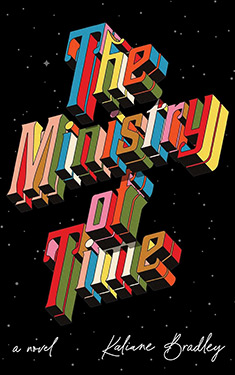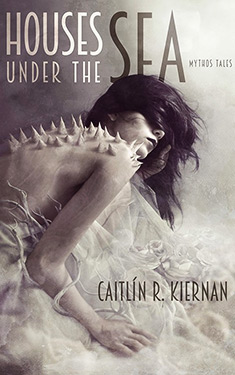Houses Under the Sea
| Author: | Caitlín R. Kiernan |
| Publisher: |
Subterranean Press, 2019 |
| Series: | |
|
This book does not appear to be part of a series. If this is incorrect, and you know the name of the series to which it belongs, please let us know. |
|
| Book Type: | Collection |
| Genre: | Horror |
| Sub-Genre Tags: | Lovecraftian/Cthulhu Mythos Occult Weird (Horror) |
| Awards: | |
| Lists: | |
| Links: |
|
| Avg Member Rating: |
|
|
|
|
Synopsis
Table of Contents:
- Lovecraft and I by Caitlin R. Kiernan
- Valentia (1994)
- So Runs the World Away
- From Cabinet 34, Drawer 6
- The Drowned Geologist (1898)
- The Dead and the Moonstruck
- Houses Under the Sea
- Pickman's Other Model (1929)
- The Thousand-and-Third Tale of Scheherazade
- The Bone's Prayer
- The Peril of Liberated Objects, or the Voyeur's Seduction
- At the Gate of the Deeper Slumber
- Fish Bride
- The Alchemist's Daughter (A Fragment)
- Hounwife
- Tidal Forces
- John Four
- On the Reef
- The Transition of Elizabeth Haskings
- A Mountain Walked
- Love is Forbidden, We Croak and Howl
- Pushing the Sky Away (Death of a Blasphemer)
- Black Ships Seen South of Heaven
- Pickman's Madonna
- The Peddler's Tale, or Isobel's Revenge
- The Cats of River Street
- M is for Mars
The Dandridge Cycle
- A Redress for Andromeda (2001)
- Nor the Demon Down Under the Sea (1957)
- Study for The Witch House (2013)
- Andromeda Among the Stones
- Publication History and Acknowledgments
Excerpt
Lovecraft and I
(excerpt)
Oh, where to start.
I'll begin here, with the day I first encountered H. P. Lovecraft. Oddly, I found him in Trussville, Alabama on a yellow school bus. I was seventeen years old. It was a rainy morning in the spring of 1981, and Lovecraft was lying all alone on an empty seat, in the form of a library book from the Birmingham Public Library that someone had accidentally left behind when they got off. It was, in fact, the original 1965 Arkham House edition of Dagon and Other Macabre Tales. The black-and-white cover, by Lee Brown Coye (1907-1981), depicts a decrepit, bug-eyed man clad all in rags, a monstrous figure that reminded me at once of Captain Ahab Ceely. The bug-eyed man is wielding a harpoon, which, as one might expect from a decrepit sort of Captain Ahab Ceely, has impaled an albino sperm whale. Turns out, Coye had something of an obsession with Moby Dick,and whales are a recurring motif in his artwork. But the man on the book's cover was a giant, by comparison to the whale, which, I'd soon learn, echoes a passage from "Dagon." Lovecraft writes:
It was the pictorial carving, however, that did most to hold me spellbound. Plainly visible across the intervening water on account of their enormous size, were an array of bas-reliefs whose subjects would have excited the envy of a Doré. I think that these things were supposed to depict men - at least, a certain sort of men; though the creatures were shewn disporting like fishes in the waters of some marine grotto, or paying homage at some monolithic shrine which appeared to be under the waves as well. Of their faces and forms I dare not speak in detail; for the mere remembrance makes me grow faint. Grotesque beyond the imagination of a Poe or a Bulwer, they were damnably human in general outline despite webbed hands and feet, shockingly wide and flabby lips, glassy, bulging eyes, and other features less pleasant to recall. Curiously enough, they seemed to have been chiselled badly out of proportion with their scenic background; for one of the creatures was shewn in the act of killing a whale represented as but little larger than himself. I remarked, as I say, their grotesqueness and strange size; but in a moment decided that they were merely the imaginary gods of some primitive fishing or seafaring tribe; some tribe whose last descendant had perished eras before the first ancestor of the Piltdown or Neanderthal Man was born. Awestruck at this unexpected glimpse into a past beyond the conception of the most daring anthropologist, I stood musing whilst the moon cast queer reflections on the silent channel before me.
Of course, the figures in the bas-relief are not imaginary, and the proportions are likely notthat far off.
But anyway, for me that's how the love affair with Lovecraft began--a stark black-and-white cover, with the name Dagon emblazoned in crimson. As I teenager, I admit that I had the somewhat reprehensible habit of judging a book by its cover. I was even worse about this as a child. Fortunately, I fell in love with Coye's cover at once. And it was just lying there on the seat of the school bus, with no one in sight to lay claim to it. I checked to see if anyone were watching. Nobody was. I felt a distinct thrill in picking it up and hurrying away with it clutched in my arms. I suppose I should have given it to the bus driver or taken it to the lost and found...or something. But I was too intrigued. I had to know what was inside. So I spent several days and nights devouring Dagon and Other Macabre Tales. I sat up late when I ought to have been asleep. I hid it inside my algebra textbook during class. These things sound horridly cliché, I know, but they're true. And as I read, I fell for the author of these stories, just as I'd fallen for Lee Brown Coye's cover art.
After reading the collection, I'd realize how effectively that cover art evoked the mood of the stories, their atmosphere, the overall frisson. And any admirer of HPL's knows that, to him, the success or failure of any weird or macabre tale hinges on whether or not the author has managed to evoke mood, first and foremost. No amount of rotting New England seaports or arcane texts or slithering tentacles can ever take the place of expertly crafted mood. You get the mood right, or you give it up. So, in that sense, Coye's cover is spot on. It drew me in, and I discovered not only the title story, but such dark gems as "The Hound," "The Strange High House in the Mist," "The Lurking Fear," "The Doom That Came to Sarnath," and, perhaps, most importantly, the essay "Supernatural Horror in Literature." I read Dagon and Other Macabre Tales cover to cover, and some of the stories I read more than once. Then I reluctantly dropped the book into the return bin at the Trussville branch of the library. I have often regretted not keeping it. It's not like I was the one who carelessly left it lying on the school bus. It's not like I was the one who'd be in trouble for losing it. But I didn't keep it. I returned it back into the world.
So, that was my initiation, my introduction to Lovecraft. A left-behind library book with an odd, grotesque, eye-catching cover created by a man who, by coincidence, died that same year.
Copyright © 2019 by Caitlín R. Kiernan
Reviews
There are currently no reviews for this novel. Be the first to submit one! You must be logged in to submit a review in the BookTrackr section above.
Images
No alternate cover images currently exist for this novel.



















 Full Details
Full Details






